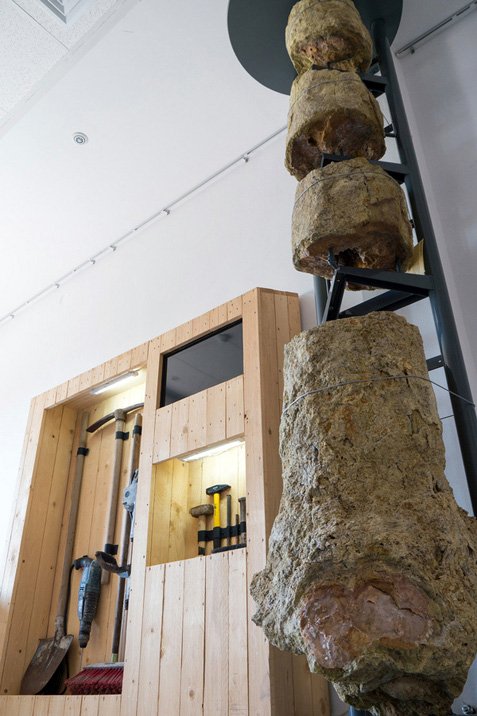Another petrified forest has been discovered on Lesvos during the excavations within the construction works on the new road Kalloni-Sigri.
Vertical and horizontal fossilized trunks in unprecedented amounts, parts and broken pieces of fossils of conifers and deciduous trees (laurels, oaks, palms, cypresses, pines), volcanic horizons rich in fossilized leaves and a wide variety of species (laurel leaves, cinnamon, walnut, palm leaves) will await visitors from next Saturday onwards in Sigri, Lesvos, in the new major exhibition of the Natural History Museum, and the outdoor places with fossils will soon be ready for visits too.
The finds have an exceptional scientific value and confirm the presence in the area of extensive subtropical forests of various ages that were covered and fossilized by successive volcanic eruptions.
According to Nikolaos Zouros, director of the Natural History Museum of the Lesvos Petrified Forest, the finds "are presented for the first time in a comprehensive and clear way. These are dozens of impressive fossilized trees, root systems and branches, a wide variety of leaves that present within the exhibition a living picture of the excavation site."

"There is no doubt that these rescue excavations of fossils are the largest in terms of scale in Greece so far, with regard to both the studied area and the number of finds. The new exhibition is a small harbinger of what will soon be found in the progress of the construction works that are taking place at the moment," said Nikolaos Zouros.
The management of the Natural History Museum wants to turn into an open-air museum the area where the new road crosses the forest.
"This will happen soon, as impressive upright fossilized trees in their natural place will be preserved and displayed on both sides of the new highway under the appropriate protection measures," says the director of the Museum.
Furthermore, one of the departments of the Sigri exhibition is dedicated to the presentation of these fossils in the open and they will soon be ready for visitors.
The exhibition is original also because it shows visitors the atmosphere of the construction site, aiming to present the human effort to save the fossils and giving information about the excavation, preservation, transportation and study of the finds as well as about the mapping and the places where the fossils are located.
A large number of photographs, maps, detailed descriptions on information boards and computer screens provide the necessary information about the course of the activities that follow the discovery of a find until its storage or display in the museum.
